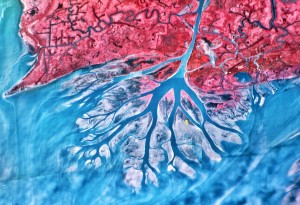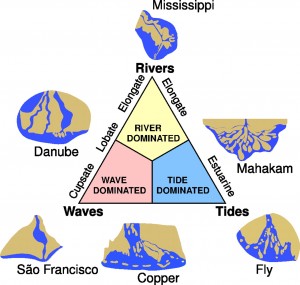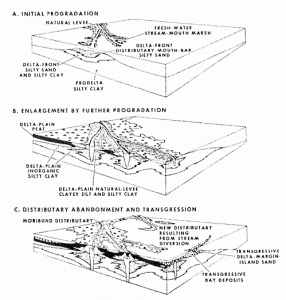ecology of:river DELTA formation
Delta definition: Coastal accumulations, both subaqueous and subaerial, of river-derived sediments adjacent to, or in close proximity to, the source stream, including the deposits that have been secondarily molded by various marine agents, such as waves, currents, or tides.
In layman’s terms: A landform created at the mouth of a river where the river empties into an ocean, sea, estuary, lake, reservoir, or flat arid area. When the flow enters the standing water, it is no longer confined to its channel and expands in width. This flow expansion results in a decrease in the flow velocity, which diminishes the ability of the flow to transport sediment. As a result, sediment drops out of the flow and deposits.
Deltas occur throughout the world, except at the poles. They all have three characteristics in common:
1. The presence of a large catchment, or drainage, basin (the area where all run-off water drains to the river). The top 30 river deltas all have catchment basins in excess of 1,000,000 sq km.
2. They all are at the mouth of large river systems that carry large quantities of clastic sediments (soils or portions of rocks that have been moved by water from where they formed).
Delta terms:
Progradation – The river deposits sediments faster than the sea is able to remove them, so the delta grows outward into the sea.
Aggradation – The river deposits build up (elevation) via overbank flooding, accumulation of biotic remains, etc., so the delta grows upward.
Transgression – The retreat of the delta, usually by the loss of sediment caused by continued wave attack or the reduction of nourishment soils.



